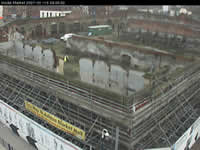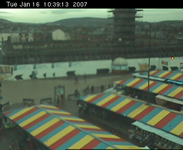Arts news, exhibitions, events, biennials and conferences, calls, resources and opportunities, technical information, exhibitions and reviews. London Edition.
31 May, 2007
subject index may 2007
print australia
educational use
Dedalo Exhibition Italy
New Year Card Exchange
International Printmaker's exhibition
australia
Australia's Virtual Herbarium
Indigenous Australian Art Commercial Code of Conduct
Country & Landscape - NLA
printmaking
Impressions on Paper - Canberra
Contemporary Photogravure
The Museum of Printing
artists/exhibitins
If I Can’t Dance - Episode III - Utrecht
Janis Joplin
Francis Bacon
Gilbert and George
Andy Goldsworthy
MOCA Focus: Alexandra Grant
KölnShow2
venice biennale
grandtour 2007
Nordic Pavilion
2007 Venice Biennale, Art Radio
Isa Genzken
The Netherlands at the Venice Biennale
sculpture
Avebury
Cerne Abbas Giant
Long Man
Winchester Cathedral
Stelarc
UK
Mossley - Buckton Castle
BATTLE OF HASTINGS 1066
National Trust Ripoffs
The Turner Prize history
Turner Prize 2007
Bath Abbey
TATE ETC.
res0urces
The Drawing Center
BBC Radio 3 interviews
1911 encyclopedia
the0ry
artist arrested
The Women of K2
film
Poland's first virtual film studio
Philosophy Bruce
30 May, 2007
Philosophy Bruce

The philosophy dept of the University of Woolloomooloo
http://www.youtube.com/watch?v=eqgnExSiS0s
Monty Python Live at the Hollywood Bowl - Philospher's Song
http://www.youtube.com/watch?v=m_WRFJwGsbY
Monty Python - International Philosophy
http://www.youtube.com/watch?v=xrShK-NVMIU
29 May, 2007
tate etc

http://www.tate.org.uk/tateetc/issue10/behindthecurtain.htm
A book that consists only of printed patterns is not such a common thing nowadays. Once deemed superfluous by the Modernists, pattern has often mirrored the times we live in: the spiky 1950s, the psychedelic 1960s, geometric 1980s, minimal 1990s. So what was happening in the 1930s? I’m sitting in the Tate archive looking at a specimen book of pattern papers published by Curwen Press in 1928, featuring designs by Paul Nash, Enid Marx, Claude Lovat Fraser and others.
Behind the Curtain: Passion in Patterns by Paul Simmons
=========
Read every article online. Highlights include:
Inner Visions by Beate Söntgen
Out of the Blue by Jon Wozencroft
Excremental Value by John Miller
Dalí I: Lights, Camera, ...Metamorphosis by Ian Christie
Dalí II: The Great Collaborator by C Jones & J Montes Baquer
Dalí III: Uncle Walt and Salavdor by Roy Disney
Dalí IV: The Performance Years by Jonas Mekas
A Study in Denim by Stephen Daniels
The Master Chameleon by Roni Horn
"Warhol stumbled across ‘The Real America’..." by G Williams
Hélio Oiticica I: Living Colour by Vincent Katz
Hélio Oiticica II: Hélio and I in London by Caetano Veloso
Hélio III: "Be an Outlaw... Be a Hero" by Neto, Marepe, Yass
In the Mind’s Eye by Oliver Sacks
Dancing the White Darkness by Marina Warner
We Are Here by D Campany, M Parr, A Pavord and others
Plus:
Microtate by Nick Rosen, Peter Newman, Peter Peri and Tom Hodgkinson
Behind the Curtain: Passion in Patterns by Paul Simmons
TATE ETC. is published three times a year.
Subscribe online at http://www.tate.org.uk/tateetc/subscribe
The Netherlands at the Venice Biennale
Exhibition Duration:
10 June–21 November 2007
Dutch Pavilion
For more information,
please visit our website: http://www.citizensandsubjects.nl

In Citizens and Subjects, Aernout Mik presents a new, complex ‘multichannel’ video installation consisting of three works
(Training Ground, 2007; Convergencies, 2007; Mock Up, 2007)
http://www.citizensandsubjects.nl/index.php?option=com_zoom&Itemid=77
embedded in an architectural intervention in the Dutch Pavilion.
A subject is a person who is under the rule or authority of a sovereign, state or a governing power and who owes allegiance and obedience. Citizens, by contrast, are generally those with rights, entitled to the full privileges of belonging to a state or nation.
By means of staging situations or using existing documentary footage, Mik focuses on training exercises, in which police learn and practice methods of enforcing the law against refugees, as well as real circumstances in which these acquired techniques are applied.
It becomes clear that this is part of the larger context of how we prepare ourselves to respond to crises and threats to national security in general.
The artist shows a mixture of staged scenarios and documentary footage depicting the police, teams of first responders, refugees and victims in crisis situations.
On multiple levels, the work questions the simplified distinction between subjects and citizens today, asking, aren’t we all actually subjected in the same way to this disquieting reality?
Through re-enactment, mimicry and the building of irrational excess, Mik undermines the distinction and clear separation between subjection and possible liberation, metaphorically suggesting that perhaps it is from here that new opportunities might emerge.
========
The critical reader Citizens and Subjects: The Netherlands, for example is a site where issues of fear, anxiety and (illegal) immigration - but also cultural resistance and emancipation - are discussed through the example of the Netherlands, which stands here as neither a particular nor universal case for discussing the so-called western condition. It asks how art and artists can react to these issues and what possibilities they can create to see things differently.
http://www.citizensandsubjects.nl/index
price 25 eur0
Lectures and debates
The 'extension' of the Dutch Pavilion to the Netherlands takes place in Utrecht through a collaboration between BAK, basis voor actuele kunst, the Dutch Pavilion at the Venice Biennale, Utrecht University and Vrede van Utrecht, as well as at Van Abbemuseum in Eindhoven and at Witte de With in Rotterdam .
September–November 2007
Organized by:
BAK, basis voor actuele kunst
STELARC - EXPERIMENTAL ART FOUNDATION
1 JUNE - 30 JUNE 2007
OPENING THURSDAY 6PM 31 MAY
ARTIST'S TALK 4PM FRIDAY 1st JUNE [Seating is limited, please book]
EXPERIMENTAL ART FOUNDATION
ADELAIDE SOUTH AUSTRALIA
Stelarc is an iconic international Australian artist who has performed extensively in Japan, Europe and the USA. He has used medical instruments, prosthetics, robotics, virtual reality systems and the Internet to explore alternate, intimate and involuntary
interfaces with the body. Internet connectivity performances such as
Ping Body and Parasite have probed notions of telematic scaling and
the engineering of external, extended and virtual nervous systems for
the body. Of his 2003 Prosthetic Head Stelarc wrote, "The aim was to
construct an automated, animated, reasonably informed and somewhat
intelligent artificial head that speaks to the person who
interrogates it. As a conversational system it requires a human user.
The head is only as intelligent as the person who interrogates it. As
the data-base increases it will become more informed and less
predictable in its responses. The artist will no longer take
responsibility for what his head says."
The Experimental Art Foundation is delighted to be able to present a
selection of Stelarc's most recent works including Blender and Extra
Ear: Ear on Arm.
Blender is a collaborative installation produced by Stelarc and Nina
Sellars. Both artists undertook liposuction operations specifically
for the purpose of this new work. The bio-materials are now housed
within Blender's industrial casing. Blender acts as an astute
signpost toward some of the more contentious issues surrounding the
blending of contemporary technology with corporeality.
Extra Ear: Ear on Arm is a surgically constructed left ear inserted
into the artist's left arm. When the lengthy procedure is completed
the ear, along with a transmitter inside Stelarc's mouth will form a
headset that is able to receive and transmit bluetooth signals.
Other works to be exhibited include Walking Head Robot, Prosthetic
Head, and Alternate Interfaces, an edited compilation documenting
other projects.
"Stelarc's ... pronouncements on the obsolescence of the body and the
need for its augmentation, with all the connotations of
techno-economic progress and social evolution they entail, can best
be heard and interpreted as provocations that are testing the limits
of the techno-deterministic discourse, a discourse in which
technology is positioned as determining the way the world develops.
They reveal the possibility, or even inevitability, of the
unpredictable, the accidental and the unknown in any developmental
trajectory." Joanna Zylinksa, "The Extra Ear of the Other: On
Being-In-Difference," Stelarc catalogue essay, EAF, Adelaide.
May-June 2007.
Stelarc is Chair in Performance Art at Brunel University West London.
He is also Senior Research Fellow at the MARCS Lab at the University
of Western Sydney. In 1997 he was appointed Honorary Professor of Art
and Robotics at Carnegie Mellon University, Pittsburgh. In 2002 he
was awarded an Honorary Doctorate by Monash University, Melbourne. In
2005/2006 he was a recipient of a New Media Arts Fellowship from the
Australia Council. His art is represented by the Sherman Galleries in
Sydney. Artist's website:
http://www.stelarc.va.com.au
For further enquiries and to make bookings for Stelarc's talk contact
EAF Program Manager: Design & Publicity, Teri Hoskin at:
--
EXPERIMENTAL ART FOUNDATION
Director: Melentie Pandilovski
Lion Arts Centre North Terrace at Morphett Street Adelaide * PO Box
8091 Station Arcade South Australia 5000 * Tel: +618 8211 7505 * Fax
+618 8211 7323 * eaf@eaf.asn.au * Bookshop: eafbooks@eaf.asn.au *
http://www.eaf.asn.au
Internet film studio - Poland
At the beginning of June the internationally renowned cameraman Slawomir Idziak will open Poland's first virtual film studio. He used the English Internet portal Stray Cinema as a model.
Marta Strzelecka describes the concept:
"Film Spring Open Virtual Studio (www.filmspringopen.eu - goes online on June 1) takes the workshops he's been doing for three years now one step further. Cameramen, directors, actors and screenwriters from several European countries will take part in the project. Before they meet up on the film set they use the Internet to work together on the script. The main principle is that there is no director dictatorship during the work on the script. Each should have the right to criticise things and even propose radical changes. The different roles are allocated only when they meet on the set." (25/05/2007)
» full article (external link, Polish)
The Museum of Printing

http://www.neram.com.au/mop.html
When Fred T. Wimble made his first batch of ink in Melbourne in 1868, he was the first to produce an Australian manufactured printers' ink. Born in London in 1846, Wimble came from a strong family tradition in the industry. His father, Benjamin Wimble, had pioneered coloured printing ink in England, creating the first supply of red ink to Cambridge University Press.
Fred travelled to Austria at the age of twenty-one. Suffering from ill health his doctor had advised a sea voyage, which his father financed to Australia. Arriving in Melbourne in July 1867 with a selection of lithographic materials, bronzes and a large consignment of inks, Wimble soon recognised that there was an opportunity to manufacture the first Australian made printing inks. This was an obvious benefit to local printers, providing greater profit than using imported inks. Fred wrote to his father in England asking for fresh supplies and permission to use his recipes. His father not only granted his request but also sent an ink mill, steam engine and other equipment.
The year of 1868 was a year of beginnings in Australian manufacture with the opening of Australia's first woollen mills, first paper mill and first printing ink. It was also the first year an Australian newspaper, the Melbourne Star, was printed using Australian made paper (produced by Ramsden Paper Mills) printed in F.T. Wimble's blue ink.
It soon became clear that Melbourne alone could not provide the market Wimble desired and from 1869 he began to travel extensively throughout Australia introducing local printers to his inks while emphasising the need for people to support and develop Australian industries. Gaining the tender for the first Australian manufactured coloured stamp, the South Australian 'penny red' printed in 1869, Wimble acquired other government printing contracts for Queensland, Tasmania, Western Australia and New Zealand. By 1875, seven years after he had arrived in the colony, his inks were being used across Australia and New Zealand.
During 1876 Wimble travelled home to England via America securing the Australian agency for a number of American and English firms. Only a few months after his return Australia, Fred Wimble moved headquarters to Sydney where he proceeded to establish the first electrotyping and stereotyping processes.
http://www.neram.com.au/history.html
28 May, 2007
Winchester Cathedral

The sculpture, Sound II, in the North isle of the crypt under Winchester Cathedral in Winchester, England is normally calf-to-knee deep in water. Note the waterlines on the camera-right wall. The artist, Anthony Gormley designed the sculpture for that environment.
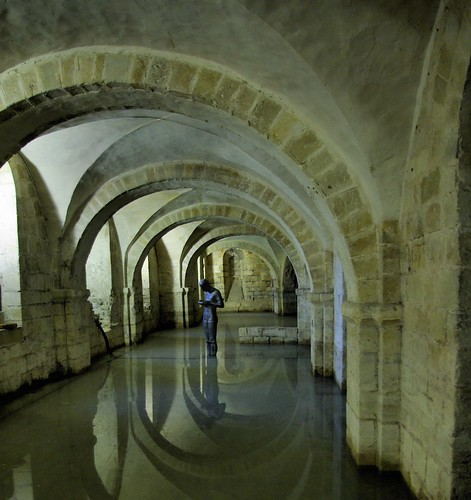
Winchester Year of Sculpture 2007
http://www.soton.ac.uk/yearofsculpture/

Light
Winchester Cathedral
3 May to 31 July 2007
This major exhibition of contemporary sculpture will include work by Darren Almond, David Batchelor, Ian Dawson, John Gibbons, Pilar Beltran Lahoz, Marc Quinn and Turner Prize winner Rachel Whiteread. The works have been selected for specific locations within the cathedral and although none have been commissioned for the site the location plays a significant role in how the works and building are interpreted.
http://www.yearofsculpture.com

Pilar Beltran Lahoz's Container, a series of silk screens with the markings of a freight container.
http://news.independent.co.uk/uk/this_britain/article2504633.ece
+++++++++++++++++++++++++++++

Winchester Cathedral Architecture
85 photos with architectural notes
http://www.astoft.co.uk/wincathext.htm
27 May, 2007
Francis Bacon

http://www.ubu.com/film/bacon.html
The South Bank Show 1985
Part of The South Bank Show series, David Hinton directs this BBC documentary about British painter Francis Bacon, known for his horrifying portraits of humanity. The program consists of a series of conversations between Bacon and interviewer Melvyn Bragg, starting with commentary during a side-show presentation at the Tate Gallery in London. Later in the evening, Bacon is followed through various bars hanging out, drinking, and gambling. In another segment, Bacon provides a tour of his painting studio and a glimpse at his reference photographs of distorted humans. The artist discusses his theories, influences, and obsessions. This title won an International Emmy Award in 1985. ~ Andrea LeVasseur, All Movie Guide
Bath Abbey


http://www-staff.it.uts.edu.au/~jenny/photos/2006/uk2006n/index.html

http://www.rock-hill.k12.sc.us/teachers/rhhs/jgarner/landscapes_of_england_files/bath.htm

http://www.travelsinireland.com/england/england/bath.htm
This is a video of the inside of the Bath Abbey in Bath, England (more)
http://www.youtube.com/watch?v=29grZSzbAyk
Bath, England
http://www.youtube.com/watch?v=P48U1KfhIT0
We hope that these pages, which can be accessed via the menu to the right or by clicking on areas of the map below, will give you just a taste of what can be seen during a visit to the Abbey.
http://www.bathabbey.org/tour/
Australian flag above a wall tablet to Admiral Arthur Philip (1738-1814), founder of Australia’s first penal settlement and first Governor of New South Wales.
26 May, 2007
2007 Venice Biennale, Art Radio
For the 52nd Annual International Art Exhibition known affectionately as the 2007 Venice Biennale, Art Radio WPS1.org will once again moor its Broadcast Barge—a floating and fully-equipped broadcast station and Internet hub, lushly furnished VIP lounge, and catered party headquarters—on the Venetian waterways. This was a big succes in 2005 (see photo).
Art Radio will be the exclusive source for festival news, reports on Venice culture, interviews, discussions, unmoderated gossip, music, historic audio, and special surprises.
The station will broadcast six full days, 24 hours a day from 4-10 June—on the Web and on local FM in Venice.
Live programs that air in the middle of the night in the US and other time zones will be automatically archived for on-demand listening. So you really won't miss a thing!
Art Radio WPS1.org will broadcast on 101 MHZ in Venice (signal licensed to Radio Base, www.radiobase.net, an established community news and information station in Venice), and overnight in surrounding regions on other frequencies (Venice, Treviso, and Padua from 22.30 to 06.30), in excerpts throughout the day on ControRadio Firenze.
Listeners also tune in to a parallel streamcast of the Venice programs by clicking on the Exibart.radio banner in the www.exibart.com site - Italy's main source of updates and information on the World of Art.
WPS1.org will carry all six days live from start to finish.
Special programming coordinated by Art Radio project partners Malo, Perna Foundation, and PAN | Palazzo delle Arti Napoli will compliment a wide range of programming including talk and music from Indonesia, Egypt, Jordan, Tunisia, Lebanon, Russia, Italy, Germany, South America and much more.
http://www.wps1.org/new_site/index.php
=============
WPS1 Venice Interviews: Guerrilla Girls| Thursday, 24 May 2007 | |
| listen | listen with RealPlayer In full regalia of course, nom de guerillas Frida Kahlo, Kathe Kollwitz and Rose O'Neill sat down with our Jen DeNike and Peter Coffin. They didn't sink us, but there was turbulence. Since 1985 the Guerrilla Girls have been reinventing the "F" word--feminism--and exposing sexism and racism in politics, the art world, film and the culture at large. For the exhibition in Venice, Always a Little Further, curated by Rosa Martinez, they installed six 17-foot movie-style posters, taking on the Biennale itself, the museums of Venice, and other issues large, larger and largest... |
1911 encyclopedia
"One leaps from one subject to another, fascinated as much by the play of mind and idiosyncrasies of their authors as by the facts and dates. It must be the last encyclopedia in the tradition of Diderot which assumes that information can be made memorable only when it is slightly colored by prejudice. When T.S. Eliot wrote 'Soul curled up on the window seat reading the Encyclopedia' he was certainly thinking of the eleventh edition."
The LoveToKnow Free Online Encyclopedia is based on what many consider to be the best encyclopedia ever written: the eleventh edition of the Encyclopaedia Britannica, first published in 1911. At a time when many encyclopedias have capsulated and condensed important knowledge, the 11th edition is generally much more in-depth and thorough on its topics.
It is not uncommon for its entries to be 5 to 10 times the length of other encyclopedias. As a research tool, this 11th edition is unparallelled - even today.http://www.1911encyclopedia.org/LoveToKnow_1911:Explanation
============
"The British Museum never charges for admission. On the other hand, the increase in continental collections is more rapid than in Great Britain, where acquisitions are only made by gift, purchase or bequest. In other European countries enormous collections have been obtained by revolutions and conquest, by dynastic changes, and by secularizing religious foundations. Some of the chief treasures of provincial museums in France were spoils of the Napoleonic armies, though the great bulk of this loot was returned in 1815 to the original owners.
"There are, however, certain disadvantages in securing both building and collection ready-made, and the special care devoted to museums in Great Britain can be traced to the fact that their cost to the community is considerable. Immense sums have been spent on the buildings alone, nearly a million sterling being devoted to the new buildings for the Victoria and Albert Museum in London. Had it been possible to secure them without such an outlay the collections themselves would have been much increased, though in this increase itself there would have been a danger, prevalent but not yet fully realized in other countries, of crowding the vacant space with specimens of inferior quality. The result is that fine things are badly seen owing to the masses of second-rate examples; moreover, the ample space available induces the authorities to remove works of art from their original places, in order to add them to the museums."
http://www.1911encyclopedia.org/Museums_Of_Art
25 May, 2007
artist arrested
But a student artist in Baroda seems to have bridged the gap between VHP leaders and their Christian counterparts with his work, though not in a positive manner.
Chandra Mohan, a final year Master of Visual Arts student at The Maharaja Sayajirao University was arrested by Sayajiganj police from the university campus on Wednesday. He has been accused of hurting the religious sentiments of Christians and Hindus in the district.
The local Hindu and Christian religious brigades have rated his paintings of Shiv Linga, Goddess Durga and Jesus Christ as highly vulgar and objectionable. He has been booked under Section 153 (A) for promoting religious enmity and hurting religious sentiments with nefarious intentions like creating riots.
The college authorities stuck to their version and have promised to extend fullest support to their student.
rediff.com has received a copy of the petition signed by the students of MS University addressed to the commissioner, asking him to lodge a counter FIR against Niraj Jain for disrupting university examination procedure, trespassing MSU premises, public nuisance, physically manhandling Chandra Mohan, provoking the mob and attempting to destroy university property."
http://www.rediff.com/news/2007/may/10art.htm
Long Man

Until recently the earliest record of Europe’s largest representation of the human form was in a drawing made by William Burrell when he visited Wilmington Priory, nestling under the steep slopes of Windover Hill, home of the 235 feet high Wilmington Giant. In 1993, however, a new drawing of the Long Man was discovered, made by surveyor, John Rowley, in 1710.
The new drawing has confirmed some theories and dispelled others. It suggests that the original figure was a shadow or indentation in the grass rather than a solid line; there were facial features that are no longer visible; the staffs being held were not a rake and a scythe as once described and the head was once a distinctive helmet shape, giving credence to the idea of the figure as a helmeted war-god.
http://www.sussexpast.co.uk/property/printview.php?site_id=13
Cerne Abbas Giant

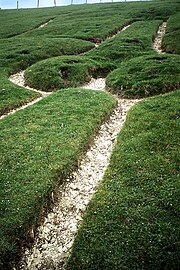
The Cerne Abbas Giant or the 'Rude Man' is the largest hillfigure in Britain, he (the figure's gender is beyond doubt) is one of two representations of the human form, the other being the Long Man of Wilmington in East Sussex. The giant, carved in solid lines from the chalk bedrock measures in at 180 feet high, and carries a huge knobbled club, which measures 120 feet in length.
The first written record of the giant appears in 1751 in a letter by Dorset historian John Hutchins, he suggested that the figure was cut in the mid 1600's.
http://www.mysteriousbritain.co.uk/majorsites/cerne_abbass.html
Just above the giant's head is a small Iron Age earthwork which encloses a roughly square piece of land, this is known as the 'Frying Pan' or the 'Trendle' and it was within this enclosure that the Mayday Maypole was erected during the festival celebrations. Like many traditional village Maypole ceremonies this practice died out in the 19th century.
Indigenous Australian Art Commercial Code of Conduct
‘Secret and sacred’ refers to information and material that is restricted under Aboriginal customary law. This may be information and material that:
is made available only to the initiated, used for a particular purpose and/or used at a particular time
can only be seen and heard by particular clan members (such as men or women or people with certain knowledge), and
is considered to be secret or sacred by the community to which it pertains.
Winikoff continued, “Many items of a secret sacred nature currently in collections, were acquired without the consent of the family members and/or the traditional owners. They and their descendants continue to suffer cultural damage through the non-repatriation of these objects.
http://www.visualarts.net.au/files/Media%20Release%2022May07.pdf
The Indigenous Australian Art Commercial Code of Conduct, currently nearing completion, outlines the following in relation to the treatment of secret sacred material:
“
where possible the relevant community from whom the cultural property was aken should be identified and notified
consultation should occur to establish the community’s willingness to receive custodianship of secret sacred remains and cultural property
where repatriation is requested arrangement should be made in consultation with the relevant communities
appropriate policies for the handling of secret and sacred material once it is identified should be determined and implemented in consultation with the relevant Traditional Owners
galleries, private dealers and collectors should not engage in the sale of sacred or secret material”.
To read extracts from the Code relating to commercial dealings in secret sacred material download here .
http://www.visualarts.net.au/files/auction.pdf
24 May, 2007
Turner Prize 2007
Tate has now announced the four artists who have been shortlisted for the Turner Prize 2007. The artists are Zarina Bhimji, Nathan Coley, Mike Nelson and Mark Wallinger. This is the first time that the Turner Prize has been presented outside London since it began in 1984, and is a curtain-raiser for Liverpool European Capital of Culture 2008.
The Prize, established in 1984, is awarded to a British artist under fifty for an outstanding exhibition or other presentation of their work. It is intended to promote public discussion of new developments in contemporary British art and is widely recognised as one of the most important and prestigious awards for the visual arts in Europe.
Zarina Bhimji
For her solo exhibitions at Haunch of Venison, London and Zurich, with work engaging with universal human emotions such as grief, pleasure, love and betrayal using non-narrative photography and film-making. Through powerful, atmospheric and poignant imagery, Bhimji's recent work demonstrates a new approach to her long-standing preoccupations and research.
Nathan Coley
For his solo exhibition at Mount Stuart, Isle of Bute, the public installation Camouflage Church, Santiago de Compostela, Spain and his contribution to the group exhibition Breaking Step - Displacement, Compassion and Humour in Recent British Art at the Museum of Contemporary Art, Belgrade, Serbia. Through a variety of media, Nathan Coley’s work makes manifest the belief systems embedded in society and its architectures.
Mike Nelson
For his solo exhibitions AMNESIAN SHRINE or Double coop displacement, Matt’s Gallery, London and Mirror Infill (2006), Frieze Projects, Frieze Art Fair, London in which his immersive installations transport the viewer to imaginary, yet plausible worlds. For the Frieze Art Fair he created an installation of a photographic studio that brought the site of creativity to the heart of the commercial environment in which it was embedded.
Mark Wallinger
For his solo exhibition State Britain at Tate Britain. Mark Wallinger’s powerful installation demonstrates art’s unique ability to engage with contemporary political issues. The direct representation of Brian Haw’s banners and paraphernalia creates a force and conviction unmatched by the representation of the Parliament Square protest in the media. The work evokes a heightened sense of reality that communicates an unpalatable political truth.
The Turner Prize 2007 is supported by Arts Council England, Liverpool Culture Company, Northwest Regional Development Agency, Milligan and Tate Members.
Work by the shortlisted artists will be shown in an exhibition at Tate Liverpool opening on 19 October 2007. The winner will be announced at Tate Liverpool on 3 December 2007 during a live broadcast by Channel 4.
The members of the Turner Prize 2007 jury are:
Michael Bracewell, writer and critic
Fiona Bradley, Director, Fruitmarket Gallery, Edinburgh
Thelma Golden, Director & Chief Curator, Studio Museum, Harlem
Miranda Sawyer, freelance broadcaster and writer
Christoph Grunenberg, Director, Tate Liverpool and Chairman of the Jury
Information and features on the Turner Prize and its history can be found at Tate Online ( http://www.tate.org.uk/turnerprize ).
23 May, 2007
International Printmaker's exhibition

International Artists' Exhibition
http://www.cittainvisibili.com/dedalo/
26 maggio --30 settembre 2007
Centro per le Arti Contemporanee DEDALO
Contrada fornaca 28, Castiglione a Casauria (PE)
(come arrivare - mappa)
Il prossimo 26 maggio presso “DEDALO”, Centro per le Arti Contemporanee si inaugura una grande mostra di arte calcografica denominata “International Printmarker's exhibition ” con lavori di 110 artisti provenienti da 16 paesi diversi.
Ma cosa sono le calcografie? Si tratta di capolavori d'arte su carta, tra cui incisioni a bulino, litografie, xilografie, linoleografie, mezzotinti, acqueforti, puntasecca, serigrafie, monotipi, collotipi. Tutte queste tecniche verranno sapientemente illustrate e messe a confronto mediante visite guidate proposte durante il giorno dell'inaugurazione, giorno in cui saranno anche allestiti laboratori che rappresentano una ulteriore occasione per coloro che intendono approfondire le loro conoscenze del mondo dell'arte incisoria, arte che va scomparendo a causa dell'avanzare di nuove tecnologie di stampa.
A disposizione dei visitatori, l'artista Bonnie Christensen farà rivivere la magia di quest'arte secondo le antiche tradizioni, tenendo brevi lezioni teoriche e dimostrazioni pratiche di stampa al torchio.
Verrà dimostrata la stampa di un'incisione, tecniche a secco, la xilografia, l'arte del monotipo.
Inoltre, all'interno della mostra una piccola sezione verrà dedicata a stampe del settecento e dell'ottocento per avere una idea dello sviluppo dell'arte calcografica in occidente ed oriente (parte della collezione è europea, parte di stampe di origine giapponese). Tutto ciò verrà messo a confronto per evidenziare le radici culturali di questa tecnica ed enfatizzarne l'evoluzione e l'attualità.
Cosa c'è però dietro questa mostra e nel genoma di Dedalo se non la volontà di riappropriarsi attraverso l'arte e l'esperienza artistica di uno dei bisogni fondamentali dell'animo umano: la possibilità di esprimersi attraverso la creatività, l'immaginazione; cosa se non l'opportunità di riaffinare una sensibilità artistica troppo spesso relegata in disparte dalla fretta dei nostri tempi, attraverso il confronto e la percezione.
La mostra inaugura il 26 maggio alle ore 18:30 e sarà aperta fino al 30 settembre.
++++++++++++++++++++
translated by babelfishInternational Artists' Exhibition
26 May --30 september 2007
Center for the Contemporary Limbs
LABYRINTH
Contrada fornaca 28,
Castiglione to Casauria (PE)
(like arriving - map)
Next 26 May near "LABYRINTH", Center for the Contemporary Limbs inaugurates one great extension of chalcographic art called "International Printmarker' s exhibition" with jobs of 110 coming from artists from 16 various countries.
But what is the copperplate engravings? Draft of capolavori of art on paper, between which recordings to burin, litografie, xilografie, linoleografie, mezzotinti, acqueforti, puntasecca, serigrafie, one designs, collotipi.
All these techniques will come wise illustrated and put to comparison by means of visits guided proposed during the day of the inauguration, day in which also laboratories will be prepared that represent an ulterior occasion for those who mean to deepen their acquaintances of the world of the incisoria art, art that goes disappearing because of being left over of new technologies of press.
To disposition of the visitors, the artist Bonnie Christensen will make to live again the magic of this art second the ancient traditions, holding short theoretical lessons and practical demonstrations of press to the press. He will come demonstrated the press of a recording, techniques to dry, the xilografia, the art of the one design.
Moreover, to the inside of the extension one small section will come dedicated to press of the seven hundred and the ight hundred for having an idea of the development of the chalcographic art in the West and east (part of the collection is European, part of press of Japanese origin).
All that will come put to comparison in order to evidence the cultural roots of this technique and to emphasize of the evolution and the present time.
What is but behind this extension and in the Labyrinth genome if not the will to riappropriarsi through the art and the artistic experience of one of the fundamental needs of the human mind: the possibility to express itself through the creativity, the imagination; what if not the opportunity of riaffinare one artistic sensibility too much often relegated in disparte from the haste of our times, through the comparison and the perception.
The extension inaugurates 26 May to the 30 hours 18:30 and will be opened until september.
educational use
If you are an educator and are referring your students to the site, can you let me know please?
I'd like to meet my readers and it gives me good feedback on site usage. It also helps me plan future content.
I'm tweaking the comment controls to make it easier to reach me.
blakkbyrd
National Trust Ripoffs
What we discovered was that the National Trust is consistently overcharging tourists with unnecessary parking or entry fees. In some cases it was little more than taking money under false pretences, ie outright fraud.
No disability services, or free parking for disability parking pass holders. In fact very few disability parking spaces in evidence.
Dover was the first experience. We followed the signs to the clifftop lookout. We paid three pounds to park, and then discovered that the lookout was a two mile walk from the car park. We drove to a neighbouring village and saw the cliffs for free.
It was one of many similar rorts. Frequently, any suitable alternate parking in close proximity was singposted no parking.
At Avebury, the signs direct you to the NT carpark where the parking fee is five pounds - if you drive past and take the next exit, you can park in the pub for free. Lets face it you were having that beer in the beergarden anyway, weren't you?
In the roman baths where the mineral water bubbles up out of the ground free from nature, they had signs up everywhere saying don't drink the water it is untreated. Upstairs, if you wanted to taste the water they were selling it at 60p per glass. Same untreated water. Maybe it was glass hire?
At Cardiff, where we flew out from, there were two attractions, the castle and the art collection at the gallery. The gallery was closed, between hangs, and the castle did not live up to the hype, or the price, in short - don't bother.
===============
before you pay and park, drive around and check out where the locals park
before you pay to enter, can you see it from outside, can you see it afterhours, is there a free one close by?
Reading the catalogue in the gift shop is a good way of pre-assessing the site. Its also a good way of previewing the content of pay to enter blockbuster art exhibitions.
+++++++++++++++
Some of the sites we paid to enter were well worth the entry fee.
The Hastings Battle site for example. They give you a self tour talking thingy, the info centre is good, the site well maintained.
The Roman Villa with its undercover mosaics was a good place to be when it was raining.
22 May, 2007
Janis Joplin
18jul1969 Dick Cavett Interviews Janis Joplin
http://www.youtube.com/watch?v=gKoIkfK18fo
for more on Janis see the special on blakkbyrd
http://blakkbyrd.blogspot.com/2007/05/janis-joplin.html
"music" on blakkbyrd
http://blakkbyrd.blogspot.com/search/label/music
BATTLE OF HASTINGS 1066
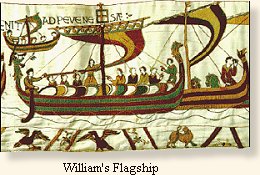
.......
So turning around to his cohorts
He lifted his big Norman voice
And said, "Hands up who's coming to England?"
That were swank 'cos they hadn't no choice.
They left their own shore about tea time
The sea was so calm and so still
And at a quarter to ten the next morning
They arrived at a place called Bexhill.
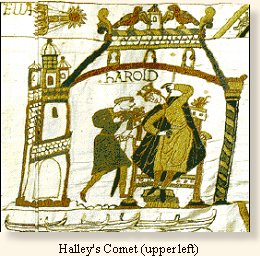
King Harold came up when they landed
His face full of venom and hate
He said, "If tha's come fer't Regatta
Tha's got here just six weeks too late."
Dook William rose, cool but haughty
He said, "'Ere lets have none of tha' cheek
Tha'd best get tha' throne reupholstered
I'll be wanting to use it next week.
When Harold heard this 'ere defiance
With rage he turned purple and blue
And he muttered some rude words in Saxon
To which William answered, "And you!"
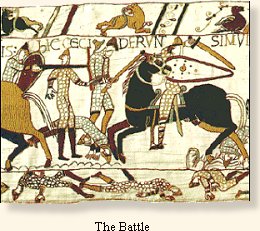
'Twere a beautiful day for a battle
The Normans set off with a will
And when both sides were duly assembled
They tossed fer't top of the hill.
King Harold he won the advantage
On the hilltop he took up his stand
With his cads and his knaves all round him
On his horse with his hawk in his hand.
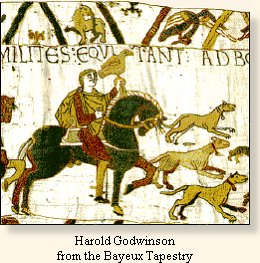
Normans had t' best line of forwards
Well armed with both buckle and sword
But Saxons had t' best combinations
And when half time came neither had scored.
So Bill called his cohorts together
And said, "Lets pretend that we're beat
We'll get Saxons down on the level
And cut off their means of retreat."
So they ran, and the Saxons ran after
Just exactly as William had planned
Leaving Harold alone on the hilltop
On his horse with his hawk in his hand.
When William saw what had happened
A bow and an arrer he drew
and went right up to Harold and shot him
He were off side, but what could they do?
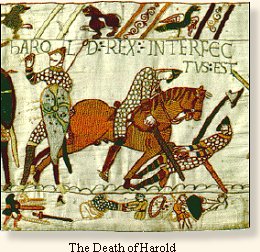
Well, when't battle were all over bar't shouting
They found Harold so stately and grand
Sitting there with his eye full of arrer
On his horse, with his hawk in his hand.
=======================
here's a video
http://www.youtube.com/watch?v=9cGR47GJgxU
Poem by Marriott Edgar
+++++++++++++++++++++++++++
http://www.lhi.org.uk/projects_directory/
"The Battle of Hastings" by Marriott Edgar
Location: Essex
This poem amused all of us at King Harold Day, although it should be read out loud with the appropriate accent to get the full benefit!
It is by Marriott Edgar, whose poems are well known, especially the one about Alfred and the Lion.
20 May, 2007
10 May, 2007
09 May, 2007
Mossley - Buckton Castle
http://www.ashton-under-lyne.com/mossley.htm
The small Pennine town of Mossley lies just over the hill from Ashton under Lyne. The character of the town is very different, with its steep streets and stone houses.
Before it became a borough in 1885, Mossley was divided between three counties. Brookbottom (Top Mossley) and Bottoms (Bottom Mossley) were in Lancashire. This part of the town was historically part of the old parish of Ashton. Quickedge, Milton and Roughtown were in the West Riding of Yorkshire. The part to the east of the River Tame, including Micklehurst, was in Cheshire. The borough became part of Lancashire until 1974, when it became part of the Metropolitan Borough of Tameside.
High on the eastern sky-line of Mossley is Buckton Castle, an iron age hill fort. The remains of the defensive ridge and ditch are still to be seen. Below it, and forming a boundary between the steep moorland and the enclosed fields, an ancient road way runs around the hillside. The Romans made use of this road and paved part of it, using it as a route between the camps of Melandra (Glossop) and Castleshaw (Saddleworth).
The area was at one time densely forested but over many years, the trees were mostly felled and the hillsides used to graze sheep. Wool production became the chief industry, with many weaver's cottages being built, incorporating a weaving room. When powered looms were invented, woollen mills and later, cotton mills were constructed in the valley.
The earliest settlements in the area, such as Brookbottom and Roughtown, were high above the valley of the River Tame. With the building of the canal and later the railway, along with the mills being constructed along the valley bottom, Mossley spread out to fill the valley.
=========================================================

Buckton Castle is a medieval ringwork/a good example of a Norman motte and bailey castle and is likely to have been constructed in the 12th century on the site of a prehistoric hillfort.
http://carrbrookvillage.users.btopenworld.com/buckton.htm
| Greater Manchester Archaeology Unit, based at Manchester University, is due to do a dig at Buckton Castle in 2003- 2004. A pocket book history of Buckton Castle is due to be published in 2004-2005. |
| |
| |
| |
==========================================
Since 1990, the University of Manchester has been involved in a long-term survey and research project of Tameside, funded by the council, with the aim of assessing existing archaeological evidence and using it to identify new areas of likely archaeological interest.
http://www.tameside.gov.uk/corpgen/millennium/yearbook10.html
The first three volumes cover the Prehistoric, Roman and Dark Age periods prior to 1066, the medieval and early post-medieval communities of Tameside between the centuries from 1066-1700, and the industrial period covering the years 1700 to 1930. Those have been followed by a volume dealing with the formative historical personalities of the area and another dealing with the borough's historic buildings and structures.
===============================
Redeposited ditch material was identified overlying charcoal and peat layers which were carbon dated to AD 765-1010; AD 700-1000 & AD 570-765. It appears that this site is also assumed to be an Iron Age hill fort.
http://homepage.mac.com/philipdavis/English%20sites/2929.html
==========================================
Legend has always told that great treasure existed beneath the grounds of this Brigantian hillfort, found on the moor-edges to the east of Manchester. Long ago, one man came along to see if he could find the treasure, said to consist of a huge chest of gold. The man brought two horses and the ground within the fort was gradually cleared away until, to the man's surprise, the legendary chest was revealed!
Attaching chains to it and the horses, the man shouted:
"Gee, whoa, whoo! Bonny, Buck and Bell,
I'll have this chest o' gowd, i' spite o' all t'devils in hell!"
But barely had the words left his mouth and the chest began to move, when the devil himself appeared in the shape of a huge hen that breathed fire! This scared the horses so much that they bolted and snapped the chains, taking their master with them but leaving the treasure-chest still in the ground. To this day the chest still remains, hidden in the Earth.
Source:
Winterbottom, Vera, The Devil in Lancashire, Cloister: Stockport 1962.
http://www.themodernantiquarian.com/site/8663
========================================

Hartshead pike serves as a focal point in the Oldham landscape, visible from miles around with unbroken views across 4 counties. This has been a beacon hill through antiquity.
Before the Romans the local tribes lit fires here to celebrate the cycle of the seasons, there were many ancient sites close by, including a stone circle at Buckton Castle, once visible from the pike it is now sadly lost. It is highly probable that the druids worshiped at Hartshead Pike during the Iron Age, and sacrifices may have been held to appease their gods.
During the Roman occupation the area took on a more mundane role and became a beacon site, the trackways became routes for the Romans to navigate quickly between the fort at Buckton, and the Roman road at Limeside. The beacon may have been lit in times of unrest to warn the local garrisons.
After the departure of the Romans much of Oldham was inhabited by the Anglo Saxons. There has been some suggestion that the pike was the site where they held their mote (moot) - to appoint leaders and to create law, and the name Hartshead may come from their habit of marking a meeting place with the skull of a wild animal (although this is pure speculation).
In more recent times the pike has been the scene for UFO sightings collected by researchers in the area, although some of the distant sightings may have been misidentified aeroplanes landing at Manchester Airport.
http://www.mysteriousbritain.co.uk/england/greatermanchester/grtman1.html
============================================
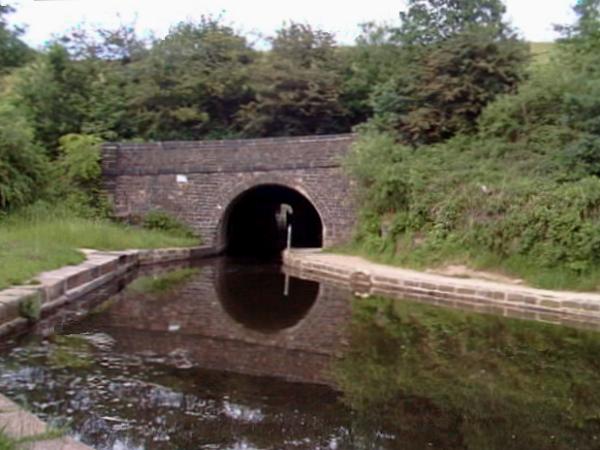
"Scout Tunnel in Mossley is the only tunnel in Tameside and is 200 yards long. If you were to stand at the top of Scout Tunnel looking towards the railway line in the direction of Woodhead Tunnel, there you will see on the hillside a horse which is cut out of heather."
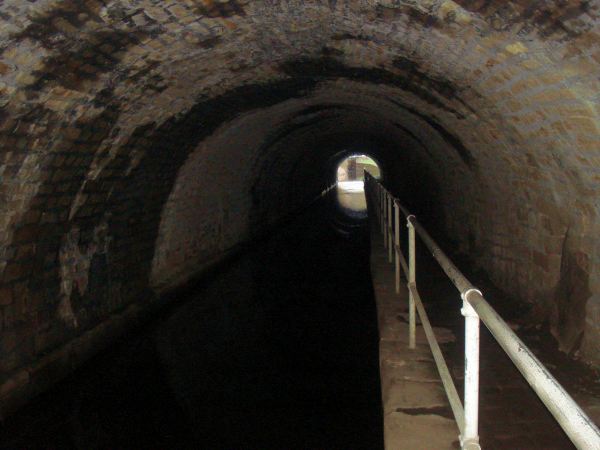
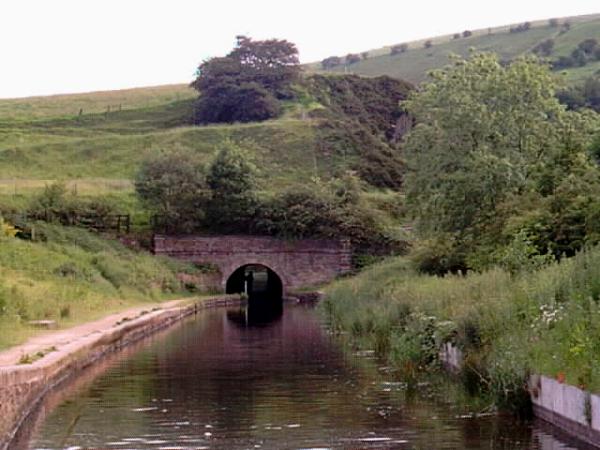
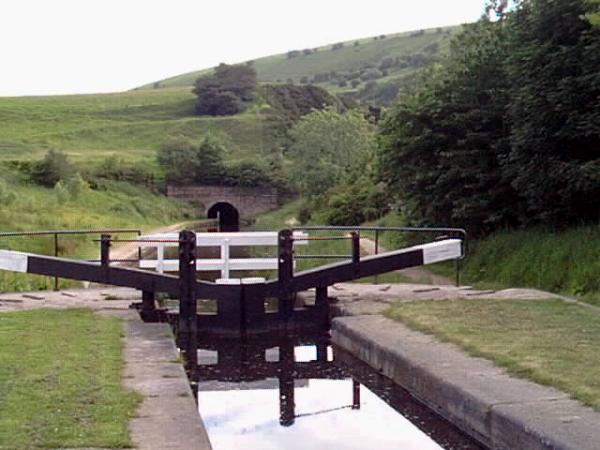
http://www.mossleyonline.co.uk/local_info/info_know.html
The Huddersfield Narrow Canal runs for 20 miles between Huddersfield in West Yorkshire and Ashton under Lyne in Greater Manchester, UK.
http://www.penninewaterways.co.uk/huddersfield/index.htm
===================================================
http://www.megalithic.co.uk/article.php?sid=4774
Other sites nearby: ( * = Image)
OLD: Pop-up a map of these sites
NEW: View this page with an embedded Yahoo Map
NEW: Download or link to a GeoRSS feed of these sites
Mossley
After Roman withdrawal from Britain in 410 AD, various petty invasions and squabbles between local warlords took place, and by the 7th century Anglian immigrants had moved into the region and occupied the land.
Most of the place names of Tameside reflect this influence. The River Tame itself (probably Norse meaning "dark river"), and other places such as Werneth Low ("a place growing alder trees") as well as Ashton and Denton (the Scandinavian word "ton" indicates a town or settlement) - all show clear Anglian-Continental sources.
Oddly, there seems to be little evidence of native British place naming within the borough, suggesting that the Anglian invaders were its first inhabitants and it had been hitherto unoccupied woodlands.
http://www.manchester2002-uk.com/towns/tameside1.html
=======================
http://www.ashton-under-lyne.com/mossley.htm
The small Pennine town of Mossley lies just over the hill from Ashton under Lyne. The character of the town is very different, with its steep streets and stone houses.
Before it became a borough in 1885, Mossley was divided between three counties. Brookbottom (Top Mossley) and Bottoms (Bottom Mossley) were in Lancashire. This part of the town was historically part of the old parish of Ashton. Quickedge, Milton and Roughtown were in the West Riding of Yorkshire. The part to the east of the River Tame, including Micklehurst, was in Cheshire. The borough became part of Lancashire until 1974, when it became part of the Metropolitan Borough of Tameside.
High on the eastern sky-line of Mossley is Buckton Castle, an iron age hill fort. The remains of the defensive ridge and ditch are still to be seen. Below it, and forming a boundary between the steep moorland and the enclosed fields, an ancient road way runs around the hillside. The Romans made use of this road and paved part of it, using it as a route between the camps of Melandra (Glossop) and Castleshaw (Saddleworth).
The area was at one time densely forested but over many years, the trees were mostly felled and the hillsides used to graze sheep. Wool production became the chief industry, with many weaver's cottages being built, incorporating a weaving room. When powered looms were invented, woollen mills and later, cotton mills were constructed in the valley.
The earliest settlements in the area, such as Brookbottom and Roughtown, were high above the valley of the River Tame. With the building of the canal and later the railway, along with the mills being constructed along the valley bottom, Mossley spread out to fill the valley.

Buckton Castle is a medieval ringwork/a good example of a Norman motte and bailey castle and is likely to have been constructed in the 12th century on the site of a prehistoric hillfort.
http://carrbrookvillage.users.btopenworld.com/buckton.htm
| Greater Manchester Archaeology Unit, based at Manchester University, is due to do a dig at Buckton Castle in 2003- 2004. A pocket book history of Buckton Castle is due to be published in 2004-2005. |
| |
| |
| |
Redeposited ditch material was identified overlying charcoal and peat layers which were carbon dated to AD 765-1010;AD 700-1000 & AD 570-765. It appears that this site is also assumed to be an Iron Age hill fort.
http://homepage.mac.com/philipdavis/English%20sites/2929.html
=================
http://www.megalithic.co.uk/article.php?sid=4774
Other sites nearby: ( * = Image)
OLD: Pop-up a map of these sites
NEW: View this page with an embedded Yahoo Map
NEW: Download or link to a GeoRSS feed of these sites
1.8km S Harridge Pike Cairn (SJ994999)
3.7km S Stalybridge Cairn* Cairn (SJ989980)
3.7km S Hobson Moor Cairn I Cairn (SJ990980)
4.5km S Buckton Edge Cairn (SJ989972)
4.5km S Hobson Moor Cairn II Cairn (SJ991972)
5.8km N Delph Tumulus Round Barrow(s) (SD980074)
7.3km SE Mouselow Castle Hillfort (SK027954)
7.5km N Jackson's Barrow* Round Barrow(s) (SE00200905)
7.9km E Highstones earthwork* Misc. Earthwork (SK064990)
7.9km E Holgate Howe Cup & Ringmarks Cup and Ring marks / Rock Art (SE064044)
8.4km E Holgate Howe Barrow Round Barrow(s) (SE067048)
8.5km S Hangingbank, Werneth Low* Ancient Village or Settlement (SJ965935)
8.6km S Lower Higham Farm Cairn (SJ961935)
8.7km S Werneth Low Enclosure Ancient Village or Settlement (SJ970932)
8.8km S Hargate Hill* Standing Stone (Menhir) (SK01239315)
9.0km S Werneth Low Cairn Cairn (SJ969929)
9.1km E Black Hill Cairn (SE074051)
10.4km S Ludworth Intake* Round Barrow(s) (SJ990913)
10.8km S Brown Low* Round Barrow(s) (SJ988909)
10.9km S Robin Hood's Picking Rods* Ancient Cross (SK006909)
===========
Legend has always told that great treasure existed beneath the grounds of this Brigantian hillfort, found on the moor-edges to the east of Manchester. Long ago, one man came along to see if he could find the treasure, said to consist of a huge chest of gold. The man brought two horses and the ground within the fort was gradually cleared away until, to the man's surprise, the legendary chest was revealed!
Attaching chains to it and the horses, the man shouted:
"Gee, whoa, whoo! Bonny, Buck and Bell,
I'll have this chest o' gowd, i' spite o' all t'devils in hell!"
But barely had the words left his mouth and the chest began to move, when the devil himself appeared in the shape of a huge hen that breathed fire! This scared the horses so much that they bolted and snapped the chains, taking their master with them but leaving the treasure-chest still in the ground. To this day the chest still remains, hidden in the Earth.
Source:
Winterbottom, Vera, The Devil in Lancashire, Cloister: Stockport 1962.
http://www.themodernantiquarian.com/site/8663
============

Hartshead pike serves as a focal point in the Oldham landscape, visible from miles around with unbroken views across 4 counties. This has been a beacon hill through antiquity.
Before the Romans the local tribes lit fires here to celebrate the cycle of the seasons, there were many ancient sites close by, including a stone circle at Buckton Castle, once visible from the pike it is now sadly lost. It is highly probable that the druids worshiped at Hartshead Pike during the Iron Age, and sacrifices may have been held to appease their gods.
During the Roman occupation the area took on a more mundane role and became a beacon site, the trackways became routes for the Romans to navigate quickly between the fort at Buckton, and the Roman road at Limeside. The beacon may have been lit in times of unrest to warn the local garrisons.
After the departure of the Romans much of Oldham was inhabited by the Anglo Saxons. There has been some suggestion that the pike was the site where they held their mote (moot) - to appoint leaders and to create law, and the name Hartshead may come from their habit of marking a meeting place with the skull of a wild animal (although this is pure speculation).
In more recent times the pike has been the scene for UFO sightings collected by researchers in the area, although some of the distant sightings may have been misidentified aeroplanes landing at Manchester Airport.
http://www.mysteriousbritain.co.uk/england/greatermanchester/grtman1.html
============
Since 1990, the University of Manchester has been involved in a long-term survey and research project of Tameside, funded by the council, with the aim of assessing existing archaeological evidence and using it to identify new areas of likely archaeological interest.
http://www.tameside.gov.uk/corpgen/millennium/yearbook10.html
The first three volumes cover the Prehistoric, Roman and Dark Age periods prior to 1066, the medieval and early post-medieval communities of Tameside between the centuries from 1066-1700, and the industrial period covering the years 1700 to 1930. Those have been followed by a volume dealing with the formative historical personalities of the area and another dealing with the borough's historic buildings and structures.
===========
Sites and Buildings of Interest
http://www.tameside.gov.uk/corpgen/millennium/yearbook11.html
=============
"Scout Tunnel in Mossley is the only tunnel in Tameside and is 200 yards long. If you were to stand at the top of Scout Tunnel looking towards the railway line in the direction of Woodhead Tunnel, there you will see on the hillside a horse which is cut out of heather."
http://www.mossleyonline.co.uk/local_info/info_know.html
==================
The Blue Plaque at Gorse Hall Estate, Stalybridge, celebrates the site of Gorse Hall which was built by Beatrix Potter's maternal grandparents, John and Jane Leech. Beatrix often visited Gorse Hall with her mother, Helen Leech.
Beatrix Potter Gorse Hall Estate, Stalybridge
========
Welcome to the official web site of The Mossley Band - the Championship Section brass band with an incredible history spanning over 150 years.
http://www.mossleyband.co.uk/

| |
| The Mossley Band 1961 |
The Brewery -The Millstone Brewery restores a traditional craft to the town of Mossley, situated where the counties of Cheshire, Lancashire and Yorkshire meet. Vale Mill, originally part of Mossley’s cotton heritage, provides an appropriate home for the eight-barrel plant that was installed in September 2003. Brewing commenced in early October.
http://www.millstonebrewery.co.uk/
================
Long Live the Fish and Chip Shop
Along with the history of fish and chips comes the colourful history of the fish and chip shop.
The first fish and chip shop in the North of England is thought to hove opened in Mossley near Oldham, Lancashire, around 1863. Mr Lees sold fish and chips from a wooden hut in the market and later he transferred the business to a permanent shop across the road which had the following inscription in the window "This is the first fish and chip shop in the world."
But in London, Joseph Malin opened a fish end chip shop in Cleveland Street within the sound of Bow Bells 13 in 1860
http://www.niagara.co.uk/fish_and_chips.htm
=====================
About the Roaches Lock * Music Venue
The Roaches Lock Inn stands in a picturesque setting between the Huddersfield narrow canal and the river Tame in Mossley, near Ashton, Manchester UK
Live music - every Friday and Saturday
Large beer garden on the canal side * Non smoking dining area
Real ales - and decent wine...
Gig requests,
Please send Band details and sample CD to the following address.
Roaches Lock Inn,
387 Manchester Road, Mossley,
Lancashire,
OL5 9BB
Tel. number 01457 834288
================
Ashton Market Hall Webcams
View a larger image of webcam1 View a larger image of webcam2
These webcam views show regularly updated images every 5 minutes of work in progress within Ashton Market Hall.
As you can see, work has commenced on the restoration of our historic Market Hall which was gutted by fire in May 2004. Contractors employed by Tameside MBC have started the enabling works to allow the main contract to follow on and the work is expected to be completed by late Spring 2008.





